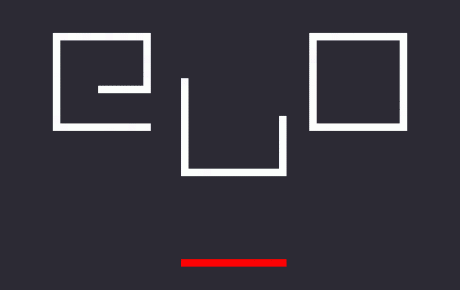“En Réponse à la lampe” was published in the journal "alire n°6" for the first time in 1992. In 1996, it was ported. This animated poem gives an important amount of possibilities for reading thanks to the apparition and the disappearance of the various bribes. The poem moves on a black screen and the text is mostly printed in white. The text is made of some stable elements in time, which allows the reader to memorize a small amount of verses at a time. Some other verses on the other hand, appear and disappear as they please anywhere on the screen, making it difficult to construct a meaning, because of the transitory aspect of the poem. An esthetic of frustration appears, because when verses appear, they fade right away. However, the transitory aspect of the text allows a temporal reading, based on the reader’s memory. The printed text seems to be the following: « Des étoiles réduire l’infini à la taille du nôtre rendre sécable la lumière elle prolonge le geste /leur passé notre présent sur la terre comme au ciel un futur pas un présent » The word that is mobile and appears furtively is “le futur” (“the future”), which appears as though it was blinking, as though it was passing on the screen. Several words and expressions are also chromatically accented (words become red), or blurry. These words have a temporal connotation, “leur passé” (“their past”), “redonne un futur à la mort” (“give another meaning to death”), “pas un présent” (“not a present”) and “un futur” (“a future”). Once all the verses are on the screen, and that we try to reconstitute a meaning, the words fade away and several beams burst on the screen, like light beams, like a white, monochrome prism of light. Then, the text “pas un présent” appears on top of these beams. The end of the poem seems to be a dedication and the signature of the author. The poem was dedicated to Patrick Burgaud, who also is an author of digital literature and kinetic poetry. Finally, the date, the title and the name of the author appear and the poem ends. Meditating on the nature of the animated poem, the speed of the transitory poem, of the temporal theme suggested by the bribes and the light suggested by the title, one could easily deduct that the poem is a reflection and an illustration of time passing, the brevity of time but also on the fact that we cannot grasp our future the word “futur” fades away and passes several times). This theme goes hand in hand with animated poetry, because the furtive aspect of the verses echoes the furtive aspect of life.
En réponse à la lampe
Source Database:
ELMCIP
Source Entry URL:
Source Entry OAI-PMH Identifier:
oai:elmcip.net:9730
Source Entry Language(s):
English
Description(s):







